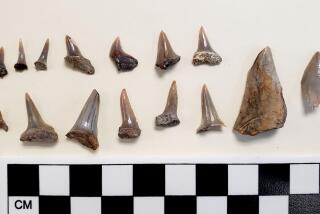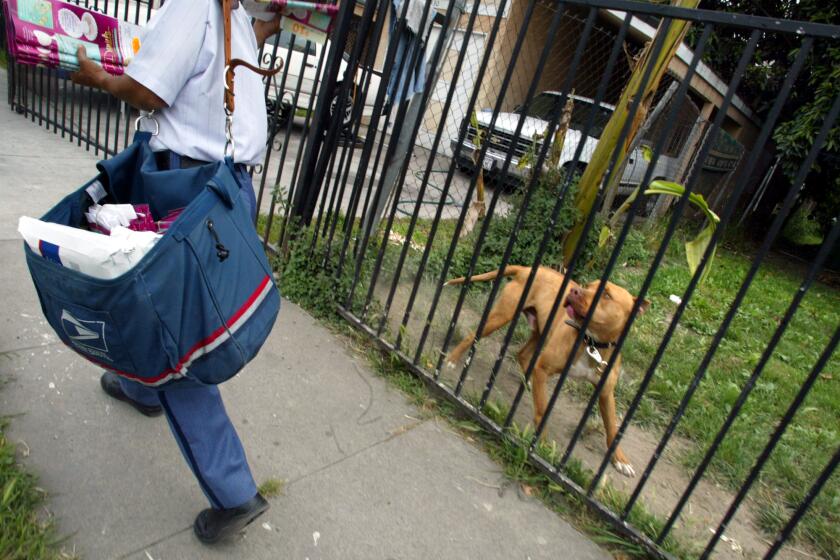But Not a Turkey’s : Scientist Has Bone to Pick
- Share via
Paleontologists digging at the grounds of a Chula Vista business park are heartbroken that they won’t be having any “turkey leftovers” this year.
The researchers had hoped that the leg bone they had unearthed at the EastLake Business Center, about 12 miles southeast of downtown San Diego, was part of a 25-million-year-old ancestor of a modern-day turkey. But instead, says paleontologist Tom Demere, “it’s only a 25-million-year-old crane.”
“We’re really disappointed,” says Demere, who works for the San Diego Natural History Museum. “If it had been a turkey, it would’ve been 10 million years older than the oldest turkey ever found.”
Demere says the bad news was broken to him recently by “the world’s turkey expert,” an avian paleontologist in New York. He had packed the fossil off to the expert in the hopes of confirming the find.
Saber-Toothed cat
Still, Demere and the three-man crew working the site haven’t had the stuffing knocked out of their spirits. In fact, he nearly gobbles with joy over some of the other recent finds: The remains of a saber-toothed cat normally found in Oregon and Nebraska, two different types of camels and a long-legged predecessor of the rhinoceros that could run a lot faster than its relatives currently living in Africa.
The site also was a popular hangout for at least two branches of the Oreodont family--small, pig-like creatures that grazed in the area until about 10 million years ago. “We found the bones of more than 700 of one of the branches,” Demere says.
Although crew members have yet to find the remnants of any really big mammals, Demere thinks they probably will. He’s particularly looking forward to finding the bones of an entolodont, a large pig that could easily strike fear into Farmer John.
“These guys were the size of a bison, maybe standing three feet high at the shoulders,” the paleontologist says. “The skulls on some of them are three feet long, and they had real big tusks.
Layers of Sediment
“They were real nasty looking dudes.”
Demere says the fossils they are finding are remarkably well preserved, perhaps because the bones were buried by several layers of sediment carried into the prehistoric flood plain.
The finds are already changing scientific theories about San Diego’s ancient history, Demere adds, because it fills in part of a huge gap of what might be considered a “fossil calendar.” Until now, most fossils dug up in the area were younger than 3 million years or older than 45 million.
“All the fossils we’re finding now are roughly 27 million years old,” explains Demere. “The time gap isn’t as big as it used to be.”
Compare Findings
Perhaps more importantly, the San Diego group can compare what they have found with collections from other parts of the country. By doing so, Demere says, they can learn more about the migratory patterns of creatures and whether there once were geographic barriers--such as mountain ranges--that researchers never knew about.
Jeff Phair, vice president of EastLake Development Co., says the company plans to set up an exhibit of the fossils when the firm opens an office in the business center next year.
More to Read
Sign up for Essential California
The most important California stories and recommendations in your inbox every morning.
You may occasionally receive promotional content from the Los Angeles Times.













